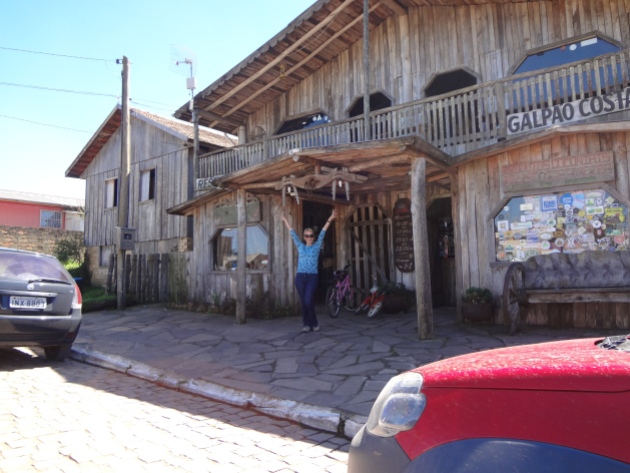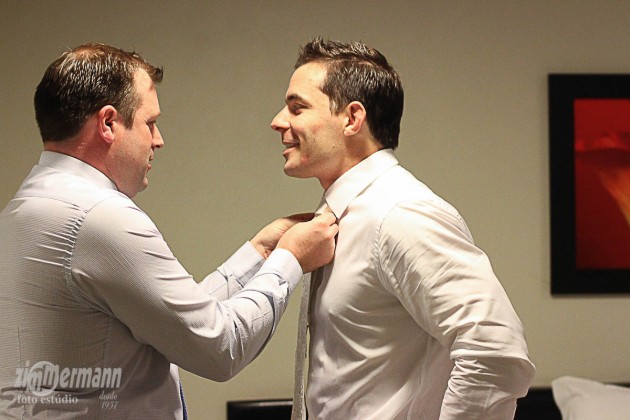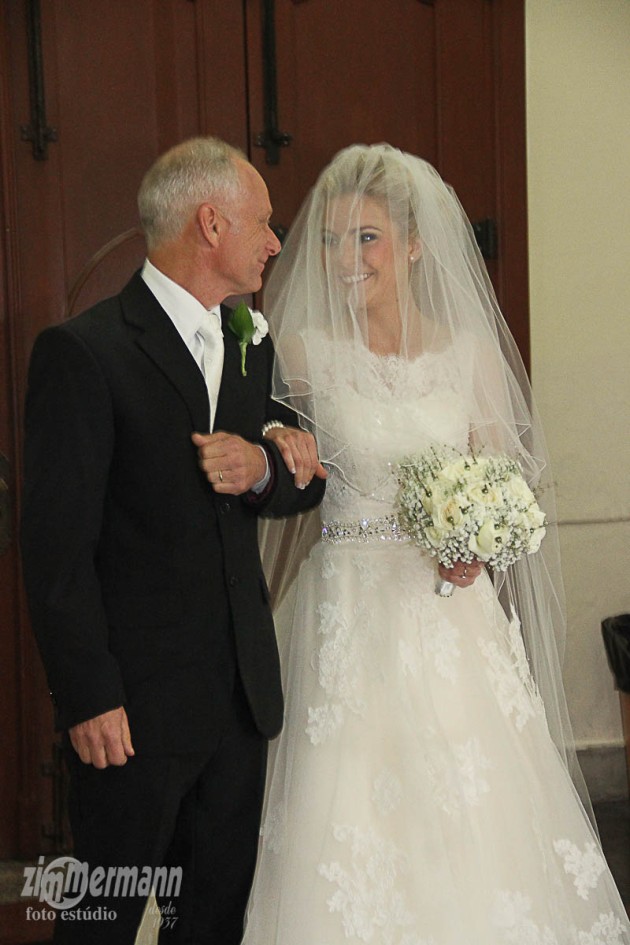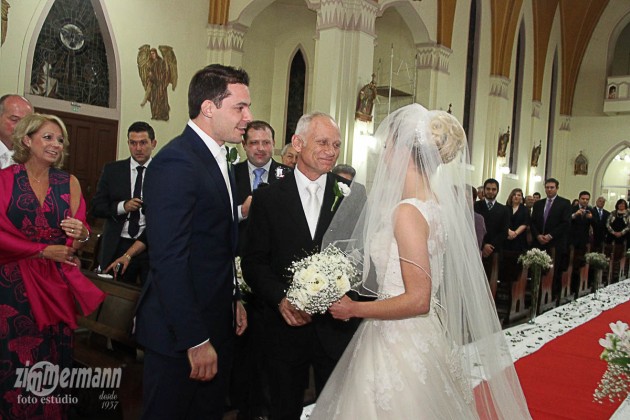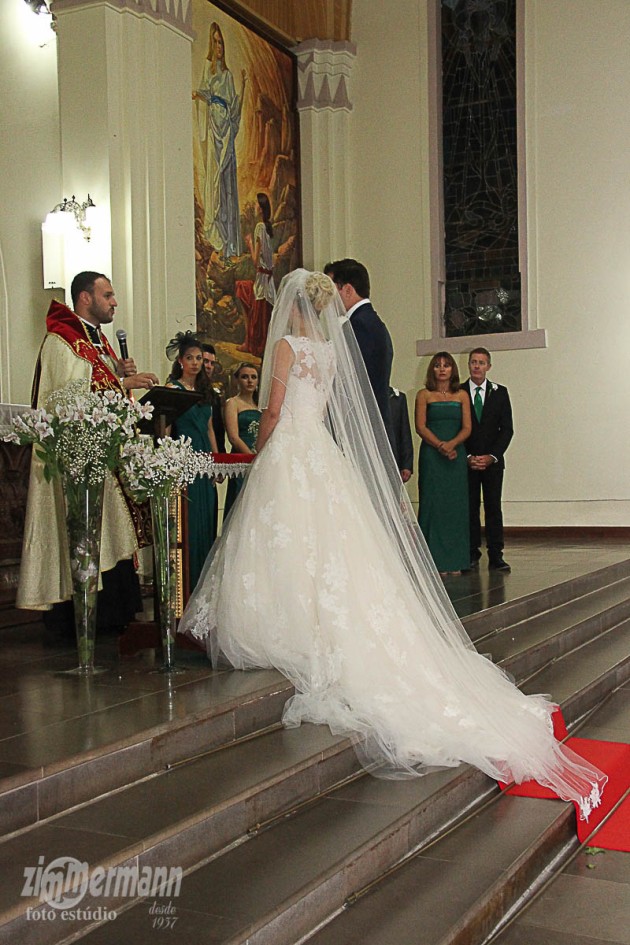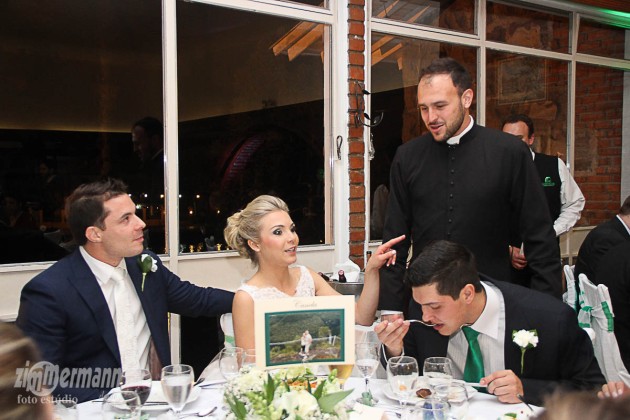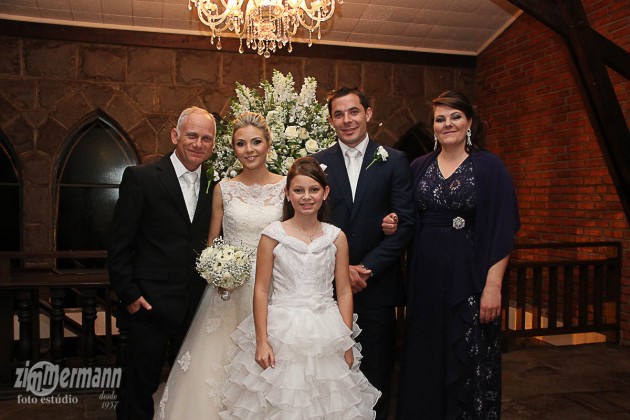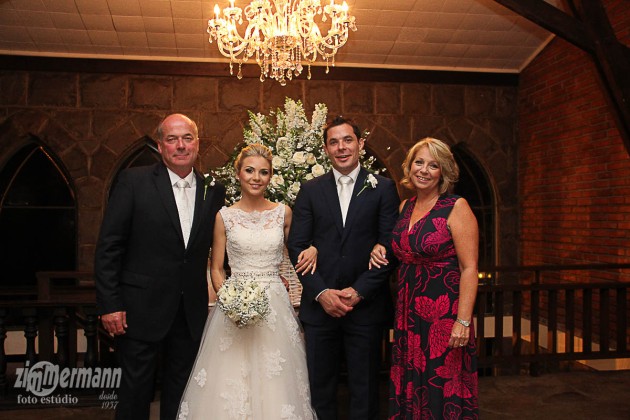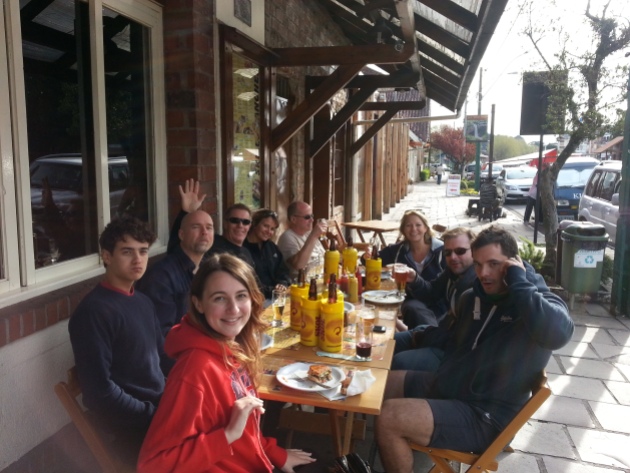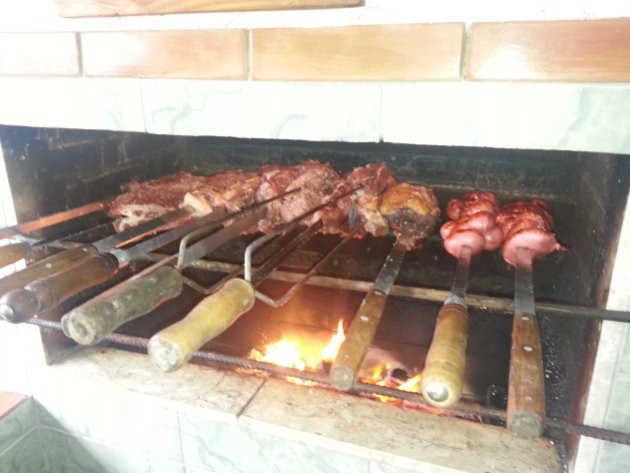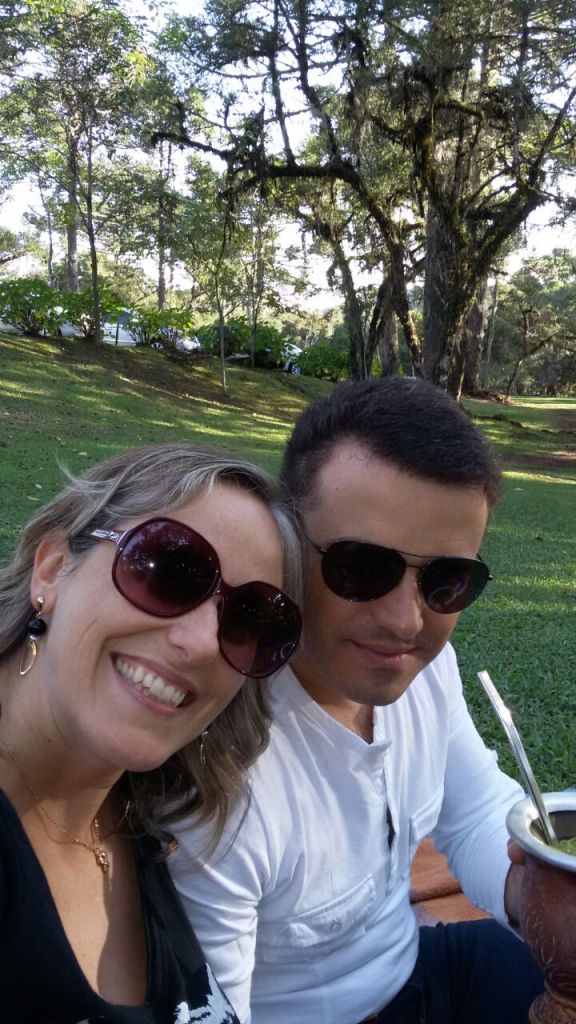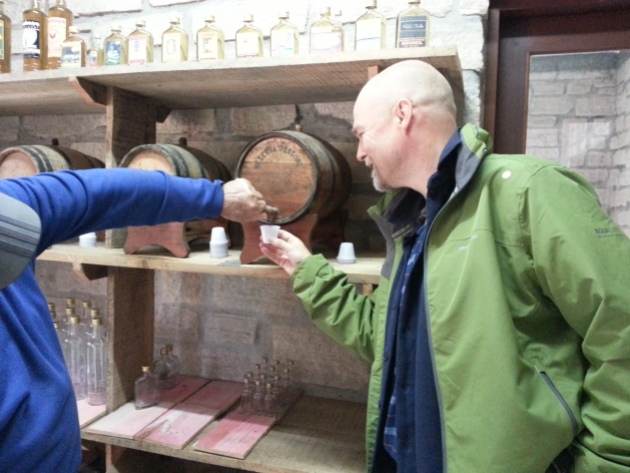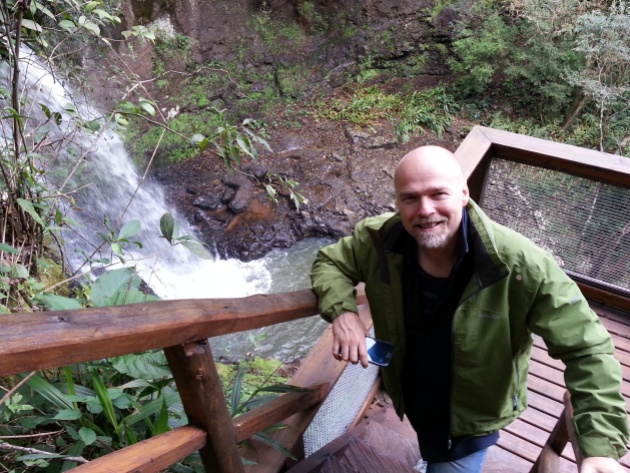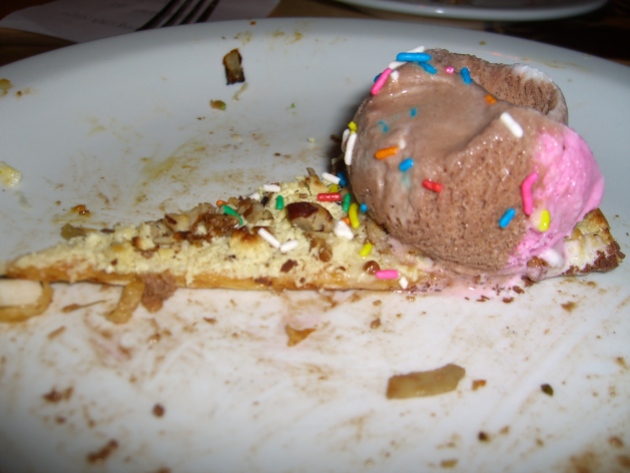

Brazil is the giant of South America and the fifth-largest country in the world. We have been on a 10 weeks Grand Tour of this vast country, and have already been exploring Brazil for 5 weeks when we arrive in the Amazon, the largest State of Brazil (read Part I here) . Our Grand Tour has definitely stepped up a notch as Part II takes us to the fascinating city of Manaus, the capital of the Brazilian State of Amazon, and the heart of the incredible Amazon Rainforest.
From Manaus, we traveled deeper

We spent 10 weeks on our “Grand Tour” of Brazil exploring some of its many fascinating cities and landscapes. Brazil is so vast, being the fifth largest country in the world, choosing an itinerary was no easy task. Although with just 10 weeks of exploring we could barely scratch the surface, we did manage to explore some incredible places.
There are thousands of miles of stunning coastline, a huge area that is home to the incredible Brazilian Amazon jungle and

Upon arrival, we watched a short video that tells the history of Khadro Ling, who left Tibet for India following the Chinese invasion in 1959. I learned little from the video since we only managed to catch the end of it. But later on, I read more about his journey from Tibet. He was the sixteenth Tulku of the Chagdud line who practised Tibetan Buddhism primarily in the Nyingma tradition of Padmasambhava. He has certainly led a fascinating life, including a life in exile from his beloved Tibet. Following Tibet’s invasion in 1959, Chagdud Tulku escaped to India where he lived in a number of Tibetan refugee camps. He later also lived in Kathmandu, Nepal and in the USA where he continued his teachings.
It was in 1992 that he accepted an invitation to teach in Brazil which led to him becoming a pioneer insofar as spreading the Dharma in South America. He moved to the Chagdud Gonpa Khadro Ling Temple in the town of Três Coroas, RS, Brazil in 1995. The Temple became the main seat of his activities for the rest of his life. He died peacefully at his home in Três Coroas in 2002 due to heart failure. His main students and the lamas he ordained continue to teach and carry on Chagdud’s many projects and practices in this region of Brazil and further afield.
Meditation is open to all here every Sunday from 9:15 am to 10 am. There are also opportunities to be part of ongoing meditation retreats and practices on site. During our visit, there was a retreat going on and hence why there were restricted visiting areas inside the Temple.

The site is located at the top of a mountain, surrounded by lush vegetation and natural beauty. It includes a large statue of Buddha, there are eight large Stupas, the main Temple itself and various other buildings erected at a later stage by artists, devotees and craftsmen from Nepal. The resident community is responsible for local maintenance and activities, volunteer workers are welcome.

Angelita trying to align her “chakras”

Main Temple

Large Buddha statue
According to the idealization of Chagdud Rinpoche, the temple was built to inspire positively all visitors regardless of their religious beliefs or traditions. Perfectly located in this quiet and idyllic setting it has certainly inspired me to learn more about Buddism and meditation.
Something To Eat
There is no food for sale inside the Temple complex site, there is only a small gift shop that sells water and soft drinks. You can bring your own food and drinks to make good use of the surrounding gardens and shaded areas for a picnic.
My sister and I went for a meal beforehand at the “Espaco Tibet” Restaurant, which claims to be the first Tibetan Restaurant of Brasil. It is located not far from Khadro Ling Temple complex, with an easy access from the main road between Porto Alegre and Gramado. There is a good car park on site. It is perfectly positioned on a hill overlooking the small town of Três Coroas and surrounded by lush green vegetation. As we entered the peaceful garden we could hear soothing Tibetan songs.

Tibetan inspired garden

You can eat “al fresco” if you wish

Angelita enjoying a peaceful sitting area at the Tibetan inspired gardens
Before our meal, we explored the beautifully kept gardens which have been carefully created to give the illusion of suddenly arriving in Asia. There is attention to detail, lots of hidden corners and places for contemplation and tranquillity.
Inside the Restaurant there is again a clear Asian vibe, staff are extremely friendly, the food had all the flavours of a unique culinary experience. Before the meal, we were served a complimentary Tibetan tea.

Complimentary tea
Angelita and I spent a day immersed in a different culture in the most unexpected of places. We ate the Tibetan flavours, we rejoiced in the peace and tranquillity of the Buddist Temple, we drank Tibetan tea. But also not forgetting our own traditions we drank Chimarrão sitting on our picnic blanket over the grass, shaded by trees overlooking the Tibetan Stupas.
It was most definitely one of the favourite days I had during my recent visit to Brazil.

Angelita brought the Chimarrão
It is only appropriate that I leave you with a favourite Buddha quote :
“We are shaped by our thoughts; we become what we think. When the mind is pure, joy follows like a shadow that never leaves.”


Surfers at Praia do Rosa
But before I tell you more about our stay at Praia do Rosa let’s rewind a bit to the start of our trip …..
My daughter Chloe and I left England soon after Christmas. We were both looking forward to another mother/daughter trip and to escaping the dreary British winter. Flying from the UK to Brazil is usually expensive at all times, but even more so during the Christmas/New Year period when costs escalate to another level. Therefore, to keep costs down we flew from London via another European city (Amsterdam); it is a long and exhausting trip which took us more than 24 hours to arrive at our final destination: my hometown of Canela in the deep South of Brazil.
After a connecting flight in Amsterdam, we flew to Sao Paulo, Brazil and the gateway to our next destination. Ahead of us there was another two-hour internal flight to get to Porto Alegre in the State of Rio Grande Do Sul, where my sister Angelita and her husband Juliano would be waiting for us. On arrival at Sao Paulo airport, we had to collect our bags and check them in again for the domestic flight. Unfortunately, our luggage did not arrive – it was stuck in Amsterdam! We were then told our luggage would take at least another 3 days to get to us.
We wasted no time getting upset over our missing luggage since our connecting flight southbound was about to leave very soon and we had to run fast to the other side of the huge Guarulhos Airport to catch it.
We spent the next two days in Canela getting ready for our trip to the seaside, unsure about when we would be reunited with our missing luggage, and with nothing to wear for the next few days we had no choice but to endure the arduous job of clothes shopping…. there is always a silver lining!
New Year Celebrations
We left Canela on December the 30th for the seaside town of Torres, where my father has a beach-house in the nearby resort of Lagoa do Jardim. There was a big group of us travelling together by car including my father, sisters, brother, nephews, nieces etc. The road trip is very picturesque via the “Rota do Mar” road descending from the highlands of the “Serra Gaucha” to sea level.

With my daughter Chloe on the “Rota Do Mar” road
Celebrating New Year with the Brasilian family was great and very different from my usual cold New Year celebration in the UK. My father and brother cooked a barbecue and just before midnight we all sat around a large table to eat together. Midnight arrived with the popping of champagne corks and a warm welcome to 2018. We celebrated until the wee small hours, chatting, eating, drinking, looking at the fireworks going off at a neighbour’s house and we even ventured for a quick walk to the beach, although we all felt the water was a little too cold for a night swim.
Although Praia do Rosa (PdR) is just across the border from Torres. It took us about four hours by to get to our destination. Although the long car journey was mostly because we did get a bit lost and missed the turning to PdR which is not clearly marked. We also spent a lot of time going in circles around PdR looking for our elusive accommodation. Signposting in Brazil is notoriously bad.
Praia Do Rosa
We rented a house for a three-day stay at Praia do Rosa. Our group had shrunk a bit for this leg of our trip since my father, his partner Dete, my brother J. Remy, sister-in-law Janea and niece Kalinka returned to Canela due to other commitments. But there were still quite a few of us and so we travelled in a convoy of two cars. In the boy’s car was my brother-in-lawJuliano with my nephews Pabblo and Lucas. The girl’s car was driven by my sister Angelita with me as a co-driver, in the back seat there was my sister Virginia with her daughter Lauren and my daughter Chloe. The journey took us about four hours with a stop for lunch and some missing turns due to poor road signing coupled with difficulties of finding our accommodation.
We loved our accommodation and particularly it’s location in the centre of the action and just a short, albeit hilly, walk to a lovely beach. The main downside of our apartment was that it only had one shower room to share between the eight of us. We did manage it ok though by taking turns to return home from the beach and shower at different schedules, only for 3 days it was certainly not perfect but doable.
We were delighted that our dear friend Sinara, who had lived with us in London many years ago was also in town, although luckily for her not sharing our one bathroom. She now lives in Porto Alegre, capital of Rio Grande do Sul and she travelled to PdR especially to meet up with us. She was staying at a nearby hotel. If you follow this blog you will know her from our one week trip together to Rome, Vesuvius and Herculaneum.
Hiking from Praia do Rosa do Praia Vermelha

The hills around PdR make for some fantastic hikes to lovely secluded beaches and coves, and we chose to hike from Rosa do Praia Vermelha; although our kids opted out of this hike for a more relaxing time at the beach and surfing.
The trail is well marked and not too demanding, although there were some steeper and also rocky parts that made it a little harder on our feet and knees. The trail starts at the sandy beach until you reach an opening into a wooded area with tropical foliage all around.

Sinara, Virginia, Angelita and Juliano all relaxed at the start of the trail

Angelita at the start of the trek…lots of shade here
There is a wooden walkway at the start of the trail as you emerge from the tree-shaded area. From here onwards there is not a lot of shade, so make sure to bring a hat and lots of sun protection lotion.

Wooden walkway
The views are amazing all around, with lush green hills in the distance, sheer cliff rocks down below and a beautiful blue sea. We stopped regularly to catch our breath, drink copious amounts of water, and enjoy the views

Juliano, Angelita, Virginia and Sinara enjoying the panoramic views
Praia Vermelha is only accessible by trails from Praia do Rosa or Ouvidor Beach. The secluded cove has no facilities or vendors so bring everything you need food and drink wise with you. The walk there and back took us about 3 hours including our stop for a refreshing swim at Praia Vermelha.

Secluded cove of Praia Vermelha is only accessible by trail…we loved our swim here
It is possible to see Southern Right Whales “Baleias Francas” here from July to November. They migrate here to mate, breed and feed their youngsters. It is also possible to spot dolphins frolicking in the clear water. Sadly for us, we spotted neither during our stay.
There are many other great trails to do in this area, in fact, our daily walk to the beach felt like a hard trek since it was quite hilly getting from our accommodation to our favourite beach. The saving grace was that the hike was very picturesque via lush vegetation, wildflowers and a beautiful salt lake called “Lago do Meio” (middle lake) used for kitesurfing, windsurfing and stand up paddleboarding.

Salty lake ” Lago do Meio”
In the evening we usually walked into town for a meal and/or hang out at a lovely live music bar. The small town is very walkable with rustic charm and a hippy vibe. It was great that our teenagers were able to hang out with us every night and be allowed into the very family orientated bars, enjoy the atmosphere with a drink (alcohol-free off course, since only Chloe was old enough to drink alcohol), listening to live music, chatting and people watching.

Sorry, not a great night photo…it was taken with my mobile phone.

Cousins Lauren, Lucas, Chloe and Pabblo
It was particularly nice to see the lovely relationship between the four cousins; Pabbo and Lucas ( my sister Angelita’s boys), my daughter Chloe and my sister Virginia’s daughter Lauren. The girls who were both born in the UK are able to speak and understand a good amount of Portuguese. They all live miles away from each other in different countries, meeting up only every two to three years so they don’t fluently speak each other’s language, yet their bond is so strong, there is an underlying understanding, an easiness in each others company that goes beyond language skills.
After our foray in Praia do Rosa we said a sad goodbye to our friend Sinara and we drove back to Canela since Virginia, Lauren and Chloe had a plane to catch and a long journey back to the UK. I stayed behind for another two weeks in my hometown and had a chance of catching up with friends and family for a while longer.
If you are visiting Santa Catarina in the very South of Brazil I would definitely recommend few days at Praia do Rosa to enjoy nature, good food and amazing local hospitality at a place that feels very authentic and not yet ruined by mass tourism.

Our time in the South of Brazil was coming to an end, so we wanted to leave on a high note by visiting the Canyons of Itaimbezinho and Fortaleza and also to spend this last few days doing a fun activity with my father, sister and nephews. Unfortunately my brother and his family were not able to join us. These two Canyons are located near the town of Cambara do Sul, only about 1:30 hours from my home town of Canela or about 170 Km from the State capital of Porto Alegre. These Canyons are part of an area with over twenty other less well known canyons of the same geologic range located in the South of Brazil.
We travelled in a group of 10 people, including myself, my husband Brian, my daughter Chloe, my son James, my father Remy and his partner Lelia, my sister Angelita, her fiancée Juliano and her two sons Pabblo and Lucas. There were five of us in my father’s car and the other five in my sister’s car. The road from Canela to Cambara do Sul is very good, paved all the way and the scenery is the gorgeous Gaucho pampas, green hills and farmland, covered with the native Araucaria trees and pine reforestation. The town of Cambara do Sul sits about 980 meters above sea level and is the gateway to the Canyons. The town itself is very small, with only one main road and very limited variety of restaurants and amenities. We arrived at lunch time and parked our cars near the church, right in the centre of town.

From left James, Lucas, Angelita, Lelia, my father Remy, myself, Pabblo, Chloe and Brian at Cambara do Sul – the gateway to the Canyons
We were all feeling quite hungry, so we decided to get a bite to eat at a nearby little restaurant, which was a very friendly place where the owners cooked us some very tasty burgers (though in Brazil if you order a burger, what you get has never been through a mincer, it’s really a steak sandwich!). With full bellies we were ready to hike our first Canyon, so from the restaurant we drove the 23 Km of a rocky, gravel road to the entrance of the “Parque Nacional da Serra Geral”, to visit the Fortaleza Canyon. This park has no infrastructure and therefore there are no facilities here, we parked the car at the end of the gravel road since there is no car park as such and there are no entrance fees to the Park.
Fortaleza Canyon
The Fortaleza Canyon is about 1, 240 meters above sea level, it extends 7.5 Km long and it is about 2 Km wide. There are two main trails in this area and we did both in half a day, these trails are not very strenuous and my father who is in his seventies did not find it particularly hard, even though he was not wearing appropriate hiking shoes or trainers . The youngsters full of energy and enthusiasm raced to the top, in particularly Lucas who was on a mission to get there first.
Trilha do Mirante – It is about a 3 Km round walk and takes you up to the Fortaleza Canyon. The views are fabulous and we had a fantastic clear day to see it all, since it can get very foggy here with the unpredictable changes in temperature and pressure between the sea level and the canyon walls, the clouds can be pushed up through the Canyon making visibility totally impossible and dangerous. We had 360 degree views all the way down to the coast. We were surprised that there was hardly anyone there, only one other couple, apart from our group. A place like this in the UK would be absolutely packed full of tourists. There are no barriers and anyone can get very close to the edge, so on a foggy day, poor visibility here could be fatal.
We took our time at the top of Fortaleza Canyon, the vistas were amazing and we could see far down to the coast of the next Southern State of Santa Catarina. We were glad to have brought our water bottles, since it did get quite warm at the top and the sun was biting down on us.
Going down was a little easier and again we took our time as we walked past waterfalls and enjoyed the 360 degree views. We drove to the entrance of the next trail “Trillha”, since it was on the way back towards the town of Cambara do Sul on the same gravel road and again parked just by the side of the road, there was a small sign post showing the way to go.
Trilha da Cachoeira do Tigre – “cachoeira” means waterfall and “Tigre”, Tiger is the name of the river that flows down and forms the fall. My father and Lelia decided to stay with the car and have a rest, whilst the rest of us walked down through the woods until we got to the river and found the top of the waterfall, the walk was not particularly difficult, but there were some more steep parts and I was worried about Lucas and Pabblo starting to cross the river and walking dangerously closed to the drop of the fall. The water was very cold, but also quite soothing on our feet as we removed our shoes to dip our toes in the cool water, we all managed to cross the river to see the waterfall from the other side.

With my sister at the other side of the falls, there is a fence here, see where we crossed at the back
We continued to walk along until we got to the “Pedra do Segredo”, Secret Stone, which is a stone block of 5 metres in diameter that weighs about 30 tons and is perfectly balanced on a very small base of about 50 cm. Afterwards we walked back to the car, and found my father and Lelia having a nap under the shade of a tree.
I was feeling like a nap myself and so we drove to our hotel for the night, the “Cambara Eco Hotel”, situated not far from the centre of the town of Cambara do Sul, with lovely views over a lake.
We all got a good rest, showered and changed to have dinner at the traditional ” Galpao Costaneira” where the decoration was pure rustic charm. There was a cosy area with a hot stove and a sofa where we helped ourselves to some “chimarrao” a very typical Gaucho green tea type drink taken with hot water and sipped slowly via a metal straw. The food was delicious and again all very traditional Gaucho fare; we chose the tabletop cooked beef, sausages and colonial cheese. There was also a buffet of other Gaucho food such as feijoada, arroz carreteiro and a variety of vegetables and salads. The desserts, also very traditional, where a real treat for me and a trip down memory lane reminding me of my childhood and my mother who used to cook puddings such as ambrosia, sagu etc. for the family.
The next morning we woke up to another sunny and bright day, perfect for our visit to the most well know of all the South of Brazil Canyon’s.
The Itaimbezinho Canyon
The name has its origin from the local indigenous tribe language “Tupi- Guarani”, meaning sharp rock. It is located in the Aparados da Serra National Park, from our hotel we drove on the RS429 road along an 18 km of unpaved road. This park has a better infrastructure and a fee of R$ 6.00 pp (£1.50) is charged for Brazilian’s and R$ 13.00(£3.50) for foreigners. There is a large car park and for parking there is a charge of R$ 5.00 for the day. There are toilet facilities, but no food and drinks for sale.
The Itaimbezinho is one of the largest Canyons of Brazil, it extends about 5, 800 metres long, about 600 metres of width and with a depth of about 720 metres. There are 3 main trails here called “Trilha do Vertice”, “Trilha do Cotovelo and Trilha do Boi. The hardest one is the later and it is only accessed from the interior of the Canyon down below at sea level via the beach of “Praia Grande” on the neighbouring State of Santa Catarina, this trail can only be entered with a professional guide and it can take up to 8 hours to complete, on this trail it is possible to take a dip in the river and get very close to the waterfalls.
We opted for the trail at the top “Trilha do Cotovelo” (The Elbow trail), it is about 6.3 km long and completely flat, mostly following an old road for part of the way and then continuing on following along the top of the Canyon walls, the old road is no longer used, since cars are not allowed here. It takes about 2:30 hours to complete the hike. There are two viewing platforms with stunning views of different angles of the Canyon. The Canyon walls are surrounded by a beautiful forest of native trees including the prehistoric Araucaria trees.
Unfortunately we did not have enough time and energy (we were all starving hungry) to do the other trail “Trilha do Vertice”, which is only 1.4 km long and takes about 45 minutes to complete. It was a shame, since this trail has great views of the waterfall “Veu de Noiva” (Bride’s Veil), that has a drop of about 500 metres. It was a mistake not bringing snacks and although we had a good wholesome breakfast earlier on at the hotel, the long walk got us all dreaming of food and refreshments.
It is better to do these top trails in the morning, since there is a higher risk of fog in the afternoon. There are no food and drink facilities inside the park, so it is a good idea to take plenty of water and snacks, also sun protection and a hat, since it can get very hot.
We finished our trekking expedition and headed back to the town of Cambara do Sul to have lunch at the “Galpao Costaneira” and had another great meal there before getting back on the road and return to Canela. Sadly it was getting to the end of our time in Brazil, we spent the last few days in my home town saying our good byes to the family and last visits to relatives including my beloved uncle Eduardo, who sadly passed away few months after my return to England. He was in his 90’s and very frail. I felt lucky to have had the opportunity to see him for one last visit, he was a constant presence all trough out my childhood and I have many fond memories of him. R.I.P Tio Eduardo!


The setting for this Big Fat Brazilian Wedding, was Canela in the deep South of Brazil, the land of the gauchos and Bavarian style architecture, a town situated in the green, lush hills of the “Serra Gaucha”. See my earlier post about this little picturesque, Southern town named after a Cinnamon tree.
The bride is my niece Caroline, who like me was born and brought up in this quiet and quaint little town. The groom Benjamin, British, born and brought up in the Isle Of Wight (IOW), just off the coast of Hampshire in the South of England. They were already married in a civil ceremony in the IOW in early May 2014 which I covered in my earlier post, Take 1.
The big day was at the tail end of the Brazilian winter in early September 2014, and we were hoping for good weather. Unfortunately we woke up to grey skies, rain and a drop in the temperature. In Brazil weddings are usually in the evening, with most brides booking the church ceremony between 6 pm and 8 pm. After the church ceremony the wedding party have a meal followed by a disco and dance until the early hours of the morning after. Caroline like most brides started planing her wedding more than a year before the big day, it was at times difficult for her, since she has been living in the UK and the wedding was to take place in another country, therefore it was crucial that her family in Brazil were able to help out. Angelita (Caroline’s aunty) played an important part since she knows so many people in the leisure industry who helped it all come together at the end.
The Big Day – 06 of September 2014
The bride spent the day of the wedding with her mother and sister getting ready, and drinking champagne to steady those last minute nerves at a private salon in Canela.
She had her very own team of hairdressers and make up artist, who even accompanied her to the church for any last minute touch ups. The delights of getting married in a small town where there is an opportunity for a very personal service.
Across town the groom had spent the morning with his family and also my son James, doing some exhilarating white water rafting. I guess it is different for boys, since there is less hair and make up to worry about. But later on in the afternoon Ben went over to the “Grand Hotel”, where his parents and the rest of the British party were getting ready. They were all staying at same hotel where the wedding meal and party was going to take place, after the religious ceremony in the church.
7 pm – By now we were are all gathering inside the church hall, it was raining and so my father managed to drive us right by the church door and we ran inside, while he had to go and park the car, poor thing. The church looked beautiful. Lucia, who is a friend of my sister Angelita, was hired to decorate the church and the wedding venue where Caroline wanted a white and green theme.
In Brazil, the Bride does not have Bridesmaids and the Groom does not have a Best Man, instead there are “Padrinhos” and “Madrinhas”. Usually there are four couples on the Bride’s side and four couples in the Groom’s side, and they stand at the side of the altar and act as witnesses and guardians of the Bride and Groom. We had spent few hours on the previous day learning about when and how to enter the church and where we should be positioned at the altar. Caroline hired a wedding planner ( another friend of my sister Angelita), who together with her assistant was in charge of getting us all coordinated in our respective places.
There was a live singer, singing songs at specific times in the ceremony. I was a little worried about how this arrangement would work, since it is a large church and I wondered what the acoustics would be like. Also the musician could not speak much English, although she had been having English lessons with Angelita for some time, and I knew she was very nervous about singing in English in front of an English speaking audience. Gosh, how wrong I was. Her voice was AMAZING, she sang all the specially chosen and beautiful English songs impeccably and added a very personal touch to the religious ceremony.
7:15 pm – The Groom was the first to walk up the isle to the altar, accompanied by his mother Vanessa. The Groom’s father, David, followed accompanied by the Bride’s mother, Luciana.
The Groom is now nervously wanting by the altar, but before the arrival of the Bride it is the turn of all the “Padrinhos”and “Madrinhas” to walk into the church; four couples on Caroline’s side and four couples on the Groom’s side. We take turns to enter the church, walk up the isle and position ourselves up by the altar. Brian and I were the first pair of “Padrinhos” to start the procession, and the assistant of the wedding co-ordinator sent Brian and I off at the wrong time…Oops, we should have waited a little bit longer for the “Padrinhos” song to start, I think that confused the musician a little bit, but it all worked out OK in the end.

Brian and I walking up the isle, remembering 26 years earlier when we took these same steps as Bride and Groom.
All the “Madrinhas” wore a green dress, in different shades of green and different styles, and the “Padrinhos” all wore green ties. Once we were all in place by the altar we eagerly waited for the arrival of the Bride. Meanwhile the flower girl Kalinka, who is the Bride’s nine year old sister, was busy looking after little Joao Pedro, the ring bearer and the two year old son of Aline and Marcelo. Joao Pedro was getting a little fractious, since he could see his mother up in the altar but he was not allowed to go and be with her. Kalinka was doing a good job of distracting him until finally the Bride arrives, fashionably late of course.
Before the Bride makes her grand entrance, Kalinka and Joao Pedro walk the red carpet carrying the rings and Joao Pedro surprises us all by doing his bit for the big day perfectly, perhaps he could see his mum, Aline, up at the altar and was happy to finally be allowed to walk towards her…
As the Bride arrives and is ready to have her moment, the bell’s in the tower start chiming, a beautiful melody. The twelve bronze bell’s gifted to this church by Caroline’s Great Grandfather, today welcoming her for her very special day. I noticed my father had tears rolling down his cheeks, no doubt feeling very proud of his beautiful grand daughter, the first of his grand children to get married here in our family church. I also had tears in my eyes as I remember twenty six years ago, when Caroline then aged four together with her sister Aline aged six, carried the rings at my wedding to Brian.
My proud brother Joao Remy, looked very nervous and emotional as he stands by her side, ready to give her away.
The Priest welcomes the happy couple and explains that the ceremony will be mostly in English, with a little Portuguese thrown in, since more important than the guests understanding what is going on, is for the Bride and Groom to know and understand what they are saying “I do” to.
After the ceremony we all gathered outside, where luckily the rain had stopped. It is traditional to throw rice at the newly weds in Brazil, but since it was an Anglo-Brazilian wedding we had a mixture of rice and confetti to throw.
Now off to the Grand Hotel for the party. The Groom and Bride had a Vintage car waiting to whisk them away.
Wedding Party at the Grand Hotel
The dinner party took place at a lovely hotel by a lake, the Grand Hotel, just 5 minutes by car from the Church. It was beautifully decorated with a green and white theme, and each table was named after a place in Europe or Brazil that has been part of their life together as a couple. A year earlier they did an inter-railing trip in Europe and visited some of their bucket list cities, therefore some of the tables were named after one of the places they visited. As guests arrived at the dinning room there was a sitting arrangement map at the door. Brian and I were seated with my father and partner, my sister Angelita and her fiancée Juliano and my brother Joao Remy and his wife Janea at the Venice table.
Caroline and Ben decided against a top table and they were seated with Caroline’s brothers Bruno and Mauricio, Caroline’s sister Aline and their respective partners at the table named “Canela”. The Priest popped over for a while to chat with the newly-weds..
The food was delicious and after the meal, only the Groom was allowed to make a speech, in fact in Brazil speeches are not expected. Aline who speaks fluent English was on hand to translate for the Brazilian’s.
A lovely tradition in Brazil is to put money in the Bride’s shoes. Usually one of the Madrinhas, in this case it was my sister Angelita, will take the Bride’s shoe around the room and everyone then makes a contribution towards their honeymoon.

Caroline with her paternal aunties, me and my sister Angelita, unfortunately our other sister Virginia who lives in London was unable to make it
The DJ, a friend of Angelita, had the difficult task of choosing songs that would appeal to the different cultures and also the different generations.

Party favours were given out to all the guests to dress up, Angelita enjoying a boogie with her fiancée
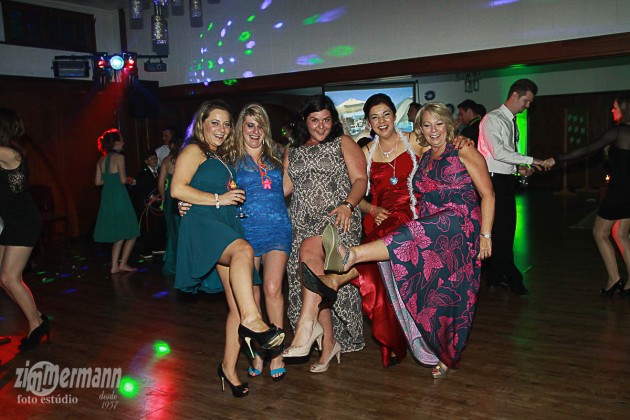
Vanessa (Groom’s mother) and Luciana (Bride’s mother) did not let language get in the way of having fun together

Caroline hugging her maternal grandfather. Just few days before the wedding Caroline’s maternal grandmother had passed away adding a sad note to this otherwise very happy family occasion

Bride throwing her bouquet, it was quite a fight, many of the youngsters decided not to get involved and just watched and laughed from the sidelines.

Caroline’s parents united for a family photo, they have been divorced for many years but remained good friends

With Caroline’s University friend Victoria, they finished their law degree last year and Ben’s cousin James who lives in Australia
Canela has again been the setting of an International wedding, and our family church once again the perfect venue to bring together our families in celebrating such a special occasion.
Bride and Groom left Canela 2 days later, bound for the North East of Brazil where they spent many happy days enjoying their honeymoon in the warm sunshine and beautiful beaches of Recife and Porto de Galinhas.
Many of the pictures in this post were taken by the photographers of Zimmermann Photo Studio, which were hired by Caroline to document this very special day.

Canela is a pretty and picturesque town in the South of Brazil, located at 837 meters above sea level in a region called Serra Gaucha ( Gaucho Highlands) or Regiao das Hortensias ( Hydrangeas Region) named after its beautiful blue Hydrangeas flowers that frame roads and landscapes throughout the spring and summer months. Located in the state of Rio Grande do Sul ( it means Great Southern River) which is the Southernmost estate of Brazil, bordering with Argentina and Uruguay. Canela can be reached by car or bus, about 2 hours from the state capital city of Porto Alegre. The climate is subtropical humid with summer average temperatures of about 20 degrees C and winter temperatures below zero with the occasional dust of snow.
Its roots started in the shade of a Cinnamon Tree “Caneleira“, were the travellers “tropeiros” used to rest and often arrange to meet up along their journeys on a horseback or horse-pulled carriage, at the turning of the century. They would often say to each other, let’s meet under the “Caneleira” and that is how the name Canela come about.
Canela is my hometown; I was born here, my grandparents were Italian immigrants that settled here in the nineteen hundred when there was only a big jungle of Araucaria trees and a very small community of other predominantly Italians and German Immigrants. These early settlers slowly built this town, which now boasts a population of about 42,000 people.
It is not yet on the international tourism radar, and long may that continue, but it is well known to Brazilians that come to the town to enjoy its charming Bavarian and Italian-influenced architecture, beautiful parks, waterfalls, trails, activities such as white water rafting, horse riding, walking trails, zip- lining, traditional gaucho barbecues (churrascarias ) and the great Southern hospitality.
I visit regularly to see my family and at my last visit in August/September 2014, I came over to attend my niece Caroline’s wedding (Anglo-Brazilian wedding – part 2, stay tuned for that), I arrived in Canela with my son James at the end of August 2014. James and I flew with TAP, from London via Portugal to Porto Alegre – RS, my daughter Chloe were already in town, since she had already spent 2 months staying with the family and practicing her Portuguese. Due to work commitments, Brian joined us a week later and arrived just in time for the Big Fat Brazilian wedding and later on a trip of 2 days to the canyons of Taimbezinho and Fortaleza.
It is always very emotional for me to see my family and spend time with them, there are usually tears of joy when I arrive and tears of sadness when I leave, in particularly because it can take another 2 to 3 years before I see my father again and he is not getting any younger. I enjoy visiting my old hangouts and there are always some new things to do in the town.
Parque do Caracol
This beautiful waterfall is set in a large and protected park, there are trails that can take you down to the foot of the waterfall (about 927 steps down) or it can just be appreciated from a viewpoint (Mirante). The Caracol waterfall is about 430 feet/ 131 meters high, falling down from a basalt cliff and surrounded by native trees, such as the Araucaria tree. The protected park is well maintained with good facilities and my family loves coming here for a day out and a barbecue or a picnic.
Catedral de Pedra
The main road into the town leads to the Catedral de Pedra, a Gothic style, Stone cathedral. This Catholic church was built by Italian immigrants, including my grandfather, who was one of its biggest benefactors. The church has a 65 meters tower that house the 12 bronze bells which were made in Italy and donated to the church by my grandfather, Joao in memory of my late grandmother Gilda. Each bronze bell is engraved with religious and political scenes about this region and also each bronze bell is engraved with the names of one my grandparents 10 children, including my father who is called Remy and is the youngest of all their children. He has the smallest bell named after him. The 2 largest bell’s which weigh 970 Kg and 680 Kg are named after my grandfather Joao and grandmother Gilda. Inside the church, there are also many of the stained glass windows that were also donated by my family. So needless to say this church has been very important to our family, I got married here in 1990. My grandparent’s house used to be on a corner plot to the right of the church and my father’s house is only a 5 minutes walk from here.
On my first day back in town, my sister Angelita took me to a new tea house, just opposite the church, called Emporio Canela, that has just recently opened offering a range of teas, coffee, hot chocolate and snack meals. We spent few hours there sipping apple, clove and cinnamon tea, gossiping and catching up.
This town has changed a lot since I lived here, it has grown and expanded so much. When I was a teenager, growing up in this town there were hardly any coffee shops, restaurants or nice bars to hang out. As a teenager I had a love – hate relationship with this town and I was often bored with the lack of things to do. Nowadays you can even get stuck in the occasional traffic jam here on the main road leading up to the church, during the busy holiday periods such as Christmas and Easter when a lot of Brazilian tourists descend here to enjoy the pretty decorations, lights and shows that in recent years have become major events in the South of Brazil.
As a teenager, I did not appreciate this idyllic location set high up in the hills and surrounded by nature, rivers, and waterfalls.
Trails and waterfalls
Canela has many nature parks with trails, waterfalls, and beautiful green scenery. I enjoyed exploring some of my old hangouts again, but this time I also spent time exploring with Brian, Chloe, James and Ben’s family, who came to Canela for the wedding to my niece Caroline. It was great to see Canela through their eyes as we explored together. We chose a sunny day to go zip-lining at Passo do Inferno, but unfortunately, when we got there the zip-lining activity was closed for that day. But we still enjoyed the trail down to the river and waterfall.
White Water Rafting
The white water rafting is on offer at the Parque das Corredeiras, on the border of Canela and Tres Coroas, the River Paranhana, offers a level 3 (beginner) rafting. Its 2.4 miles/4 km descent starts at a river dam called “Barragem das Laranjeiras”, a local company organizes it all including transport there and back. It is a fun packed day out.
Canela does not often receive international visitors, but for few days before Caroline and Ben’s wedding the British took over this little town and enjoyed the culinary delights and local beers. English is not widely spoken here, so there was a lot of pointing and sign language going on whenever I was not around to help with translations. Chloe had already been here for 2 months, so her Portuguese had greatly improved and she loved every opportunity to practice it.
Gaucho Traditions
There is a strong regional identity and culture, with the Gauchos still practicing their traditions of dressing in a particular way, using traditional language and expressions. Traditional dances and the habit of drinking “chimarrao”, a green herbal tea, called “mate”, which is served very hot in a “cuia” with a metal straw and shared with friends and family during a get-together.
Wine and Rum production
Canela is not as famous for its wine production as the neighbouring towns of Caxias do Sul and Farroupilha, but there is good wine to be had here and during my recent stay we visited the Jolimont Wineries, together with my father who was very happy to drive us down into the valley, via a dusty and unmade road. We spent a lovely afternoon sampling the wine and also later on visited the rum factory, which was just further down the valley. Rum is used to make the popular Brazilian cocktail called “caipirinha”, the recipe includes rum, lime, ice, and sugar.
Culinary
The south of Brazil is, of course, famous for its barbecue and every gaucho house will have a built in barbecue place, my father’s house is no exception and most Sundays he will host a great barbecue for the family. During our visit, we certainly had our fair share of enjoying this tradition. The culinary here is also greatly influenced by the Italian and German immigrants, there are many pizza and pasta restaurants offering a great selection. Some pizza specialist restaurants, called “pizzarias” offer the “rodizio” in which an entrance fee is paid and dinners can eat as much pizza as they can possibly stomach. A great way of tasting all the different flavours, including some sweet flavours such as the chocolate or ice cream pizza.
Canela is also well known in Brazil for its prayer chocolate factories and much delicious local produce such as colonial bread, jams, cakes, tarts, cheese, and salamis. The incredible “cafe colonial” is a feast of all these local produce which can be enjoyed over many hours of gluttony, usually washed down with some local wine.
Canela has a very special place in my heart and although I only lived there for 18 years, since I left home at the age of 18 to live in the state capital Porto Alegre to attend University and later on I settled in the UK where I have lived most of my adult life, I do still feel very connected to this small town in gaucho land. But the main pull for me is my family and the love and memories that we share together. I lost my mother in 2001, she died after a long battle with kidney disease and renal failure. She died very young, aged only 65 and I still miss her dearly.
Therefore my visits are all about spending time with the family and ensure that my children get to know and connect with their Brazilian roots. Both Brian and I have always encouraged them to learn to speak Portuguese since most of my family does not speak any English.

With my brother Joao Remy and my sisters Virginia and Angelita – at Angelita’s graduation, a proud day for us all.
Brian and I have plans of spending more time in Brazil in the near future, we are keen to do a coastal road trip from the South along the coast all the way up to the very North Brazil. It will be an epic road trip!















